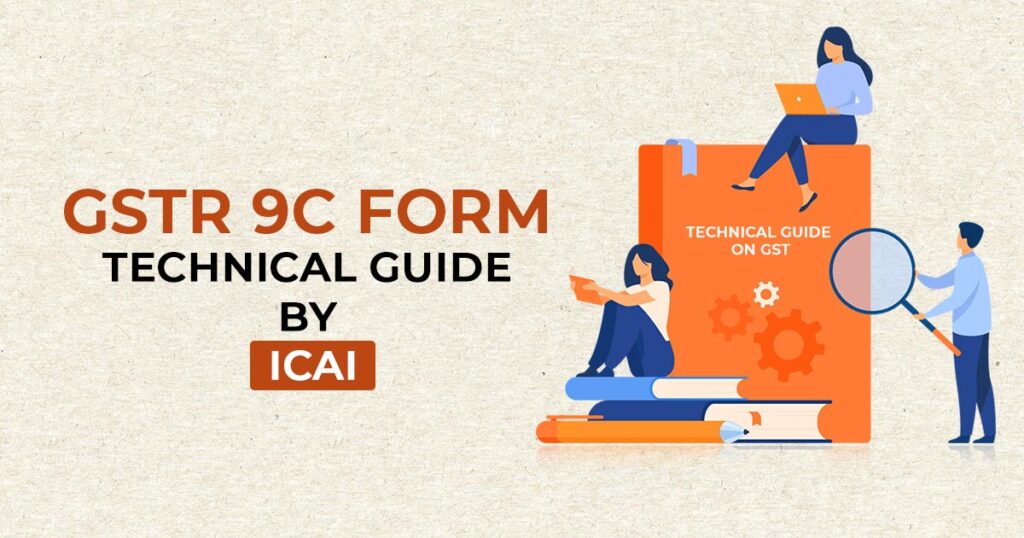The Technical Guide on the GST Reconciliation Statement (Form GSTR 9C) has been issued by the Institute of Chartered Accountants of India (ICAI).
ICAI has released instructions on the GST Annual Return
ICAI, through its GST & Indirect Taxes Committee, has played a crucial role in supporting the establishment of GST in India. The council has consistently offered important suggestions to the government throughout the GST implementation process. It actively assists its members by organizing various courses, conferences, programs, live webcasts, and e-learning initiatives focused on GST. The body also publishes informative technical publications covering a wide range of GST-related topics.
The GST & Indirect Taxes Committee has initiated a publication called the “Technical Guide on GST Reconciliation Statement (Form GSTR 9C).” The guide provides detailed insights and instructions on how to submit the reconciliation statement through form GSTR-9C. The provisions are explained in clear and understandable language.
Businesses must file the GSTR-9C form as part of the GST regulation for annual returns. The deadline for filing the GSTR 9C form is on December 31st of the following year after the specific financial period.
CA Aniket Sunil Talati stated his opinion that it is a positive move and members will find this publication very useful in discharging their statutory functions and responsibilities efficiently and effectively.
Further, he showed his excitement and acknowledged the efforts taken by the GST & Indirect Taxes Committee in developing the publication, Technical Guide on GST Reconciliation Statement (Form GSTR 9C).
Furthermore, the publication includes a comprehensive discussion on Form GSTR-9C (Reconciliation Statement), highlighting both optional and obligatory fields. It also suggests potential sources of information to complete each table within the form.
The content and topics included in this technical guide are as follows:
Introduction to GST Reconciliation Statement
Important Aspects of GST Reconciliation Statement in Case of Multi-Locational Entities.
- Introduction to GST Reconciliation Statement
- Important Aspects for GST Reconciliation Statement in Case of Multi-Locational Entities
- Analysis of FORM GSTR-9C
- Appendices
Appendix 1- FORM GSTR 9C
Appendix 2- Suggested Reconciliation Checklist
Appendix 3- Abbreviations
Appendix 4- Press Release dated 04-06-2019
Appendix 5- Press Release dated 03-07-2019
Appendix 6- Press Release dated 14-11-2019
Appendix 7- FAQ’s
Objective of the Reconciliation Statement under the GST
From the format of FORM GSTR – 9C (Reconciliation Statement), the following can be deduced:
(a) The reconciliation statement aims to have a reconciliation between details filed as per the annual return in form GSTR 9 and details as per the audited financial statement.
Technical Guide on GST Reconciliation Statement (Form GSTR 9C)
It aims to have a reconciliation of:
(i) Turnover declared,
(ii) Taxes paid,
(iii) Refund claimed; and
(iv) Input tax credit availed;
(c) The reconciliation statement also aims to assess the registered person’s
compliance with the provisions of GST Acts and Rules.
The guide highlights the significance of GST reconciliation by stating that the primary objective of the GST Reconciliation Statement is to ensure accurate reconciliation between GST Returns and the company’s books of accounts. This reconciliation covers various aspects such as declared turnover, taxes paid, refund claims, and input tax credit availed and compliance with the GST Acts and Rules is a crucial component of this process.
Check out the official Technical Guide for click here
